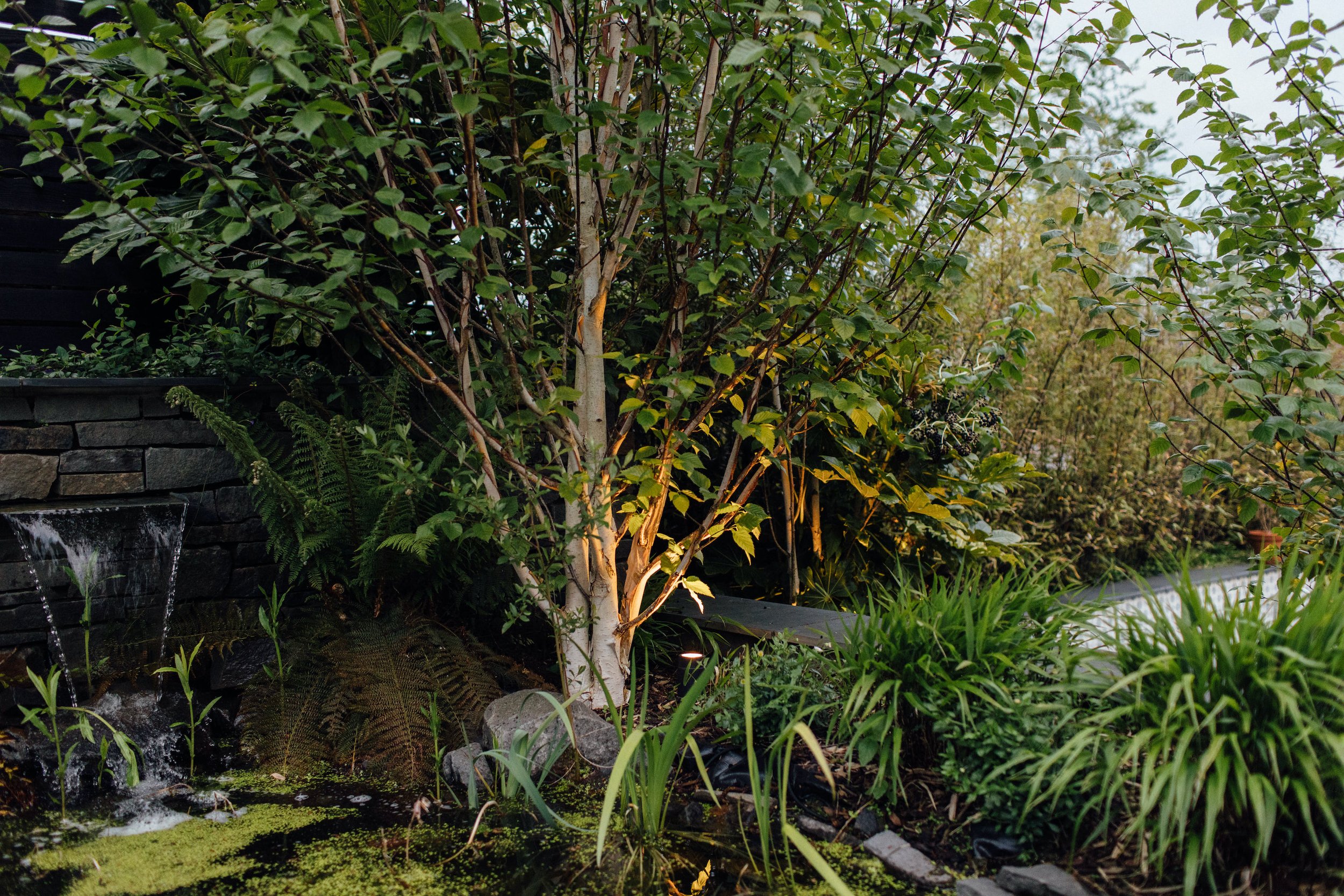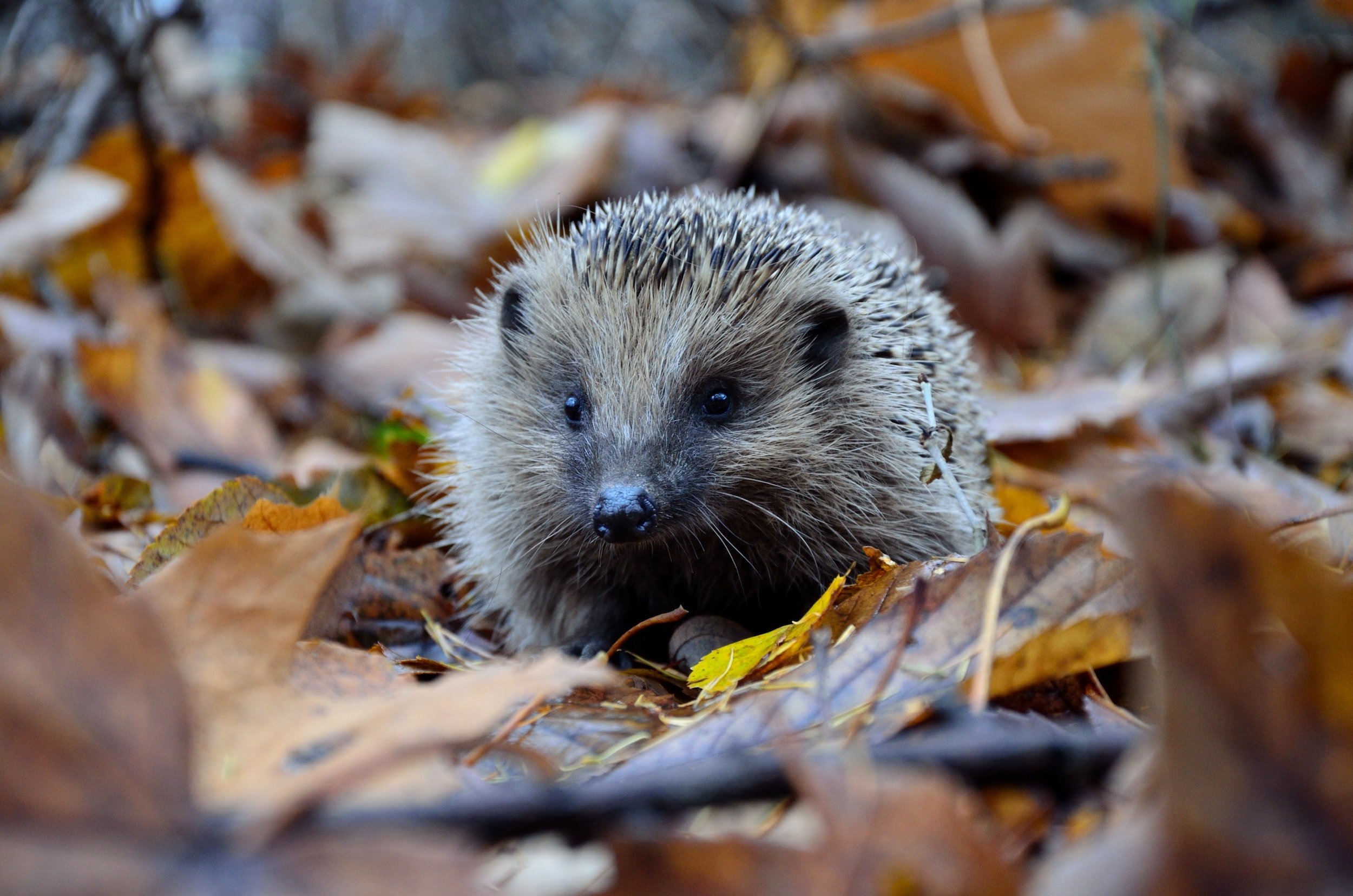How to build a wildlife pond
One of the best things you can do to attract wildlife into your garden is to introduce water. Even a small pond will provide important drinking water for birds, bats, bees, hedgehogs and all sorts of other wildlife and will provide habitats for frogs, toads and newts as well as many fascinating aquatic insects such as dragonflies and damsel flies.
A pond can be as large and fancy or as small and straightforward as you like. Anything from a small bucket placed in a corner, to a sunken pre-formed pond, or even a natural swimming lake, if you have the space! Including water in the garden in whatever form suits your space will always benefit wildlife.
Building the pond
It’s best to site a new pond in a sunny spot, on level ground. If you’ve got space, when you’re planning, the bigger the better! The more water you have, the more species of wildlife you’ll create habitats for.
Use a hosepipe or some string to mark out the shape of the edges of the pond. It can be any shape you like, the wildlife won’t mind either way! We are personally fans of rectangle ponds, with planting that spills over the clean lines at the edges, but choose a style that suits your garden and your tastes… It doesn’t need to be huge, but make sure you have room to dig down at least 60-80cm at the deepest point in the middle to give the creatures in the water somewhere to go if it freezes.
As you dig out the pond, make sure that it has gently sloping edges on at least one side to allow wildlife to access it safely. A sloping pebble or gravel ‘beach’ is perfect to allow smaller creatures to easily walk in and out. Alternatively, you could create shallow shelves that step down gradually to the deepest part of the pond.
Once you have dug the pond, make sure you have removed any stones in the soil and then line the hole with pond underlay (or old carpet) before putting the pond liner on top. I find flexible liners work better for wildlife ponds than the rigid ones. I would recommend using a layer of underlay on top of the liner too to protect the liner from being punctured by stones (or the claws and beaks of visiting creatures!)
Half fill the pond with water to weigh down the liner and then use stones and washed gravel to create a natural looking edge to the pond. You want to avoid any liner being on show as it will break down in the sunlight.
Adding water
If possible, it’s best to fill a pond with rainwater, so if you have a realistic means of collecting this (such as a really large water butt) then add in from there. However, if it’s not feasible to use rainwater, don’t worry too much. You can fill the pond with tap water and then add in “tap water treatment,” which removes chlorine and makes the tap water safe for wildlife. You can buy this cheaply from most garden centres, or pond specialists. A final option is to fill with tap water and leave the pond empty for at least 48 hours before adding in any plants. This should be enough time for most of the chemicals to safely evaporate.
Mature planting around ponds help to create habitat for all kinds of wildlife
Shallow sloping edges at ponds, with stones as resting places, help small creatures safely climb in and out
Choosing plants
Our little one loves to look for wildlife in the pond!
Once the pond is filled, plant up with a mix of native aquatic plants. Different plants do well at different water depths, so choose a plant for each position. Pond specialists, such as Waterside Nursery, will sell plants listed by the correct water depth, which makes it easy to choose the right plants for the right spot.
Include some oxygenating plants to help keep the pond water healthy and weed free. Plants with floating leaves (such as waterlilies) can provide resting stations for insects such as dragonflies, or places for them to lay eggs. And plants on deeper shelves create habitat and hiding spaces for any creatures living in the pond. A good mix of three types of plants will help make the most biodiverse pond possible!
Aim to cover about a third of the water surface with floating plants, to create shade within the pond.
When the pond is fresh, you may get some blanket weed developing across the top at first. If you do, just scoop it out with a stick, resting it at the edge of the pond so that any creatures can escape. But once the plants have established, the pond will require very little maintenance and will hopefully bring your garden to life with lots of wonderful wildlife!
One of our favourite pond dwellers! Frogs and newts find new ponds surprisingly quickly and will happily set up home
Wildlife
It can be tempting to intentionally move wildlife into your new pond by scooping some from a local park, for example. But it’s best not to move creatures around from other places, but to just wait and watch, as the wildlife will find its way there on its own. Though it can be tempting to add a bucket of frogspawn from elsewhere, this can risk spreading diseases, and the frogspawn often don’t adapt easily to their new environment and may simply die. If you’re patient, frogs and newts should find the pond on their own… As well as a whole host of other insects and water dwellers.
Make sure there are small gaps under your fences or boundaries, so that creatures can get in and out. (This helps for hedgehogs too.)









